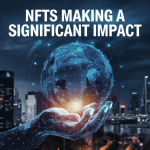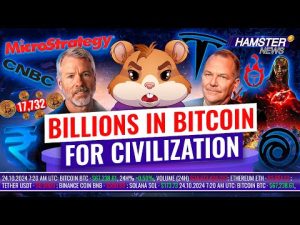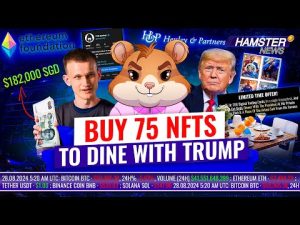
title

The Revolution of Digital Art: How NFTs are Changing the Art World
The digital age has ushered in a myriad of technological advancements, but none have been as transformative for the art world as non-fungible tokens (NFTs). As artists and collectors navigate this new landscape, the traditional art market is being reshaped by the decentralization and democratization that NFTs offer. This blog post delves into how NFTs are revolutionizing the digital art scene and highlights platforms like Get J.O, which are at the forefront of this change.
Understanding NFTs and Their Impact on Art
Non-fungible tokens, or NFTs, are digital assets that represent ownership of a unique item or piece of content. Unlike cryptocurrencies such as Bitcoin, NFTs are indivisible and unique, making them ideal for representing artworks, collectibles, and other digital assets. This uniqueness is a game-changer for artists, allowing them to create irreplicable digital art pieces that can be bought and sold just like traditional art.
One of the primary advantages of NFTs is the ability for artists to sell their work directly to collectors without the need for intermediaries. This not only provides artists with greater control over their work but also allows them to retain a larger share of the profits. The transparency and security provided by blockchain technology ensure that the authenticity and ownership of the artwork are indisputable.
Get J.O: A Pioneer in NFT Marketplaces
One of the most notable platforms in the NFT space is Get J.O. Built on the TON blockchain, Get J.O serves as a decentralized platform for digital assets, with a primary focus on non-fungible tokens. This marketplace allows users to buy, sell, and trade NFTs securely and transparently. By utilizing blockchain technology, Get J.O ensures that each transaction is recorded on a public ledger, providing an immutable record of ownership.
The platform’s decentralized nature means that it operates without a central authority, giving users more control over their digital assets. This is particularly beneficial for artists looking to protect their intellectual property and ensure they receive fair compensation for their work. Moreover, the transparency of blockchain transactions helps build trust between buyers and sellers, reducing the risk of fraud.
The Benefits of NFTs for Artists
NFTs offer a plethora of benefits for artists, particularly those working in digital mediums. One of the most significant advantages is the ability to reach a global audience without the constraints of traditional galleries or auction houses. Artists can showcase their work to collectors worldwide, expanding their reach and increasing their potential for sales.
Additionally, NFTs allow artists to embed royalties into their smart contracts. This means that every time their work is resold, they receive a percentage of the sale price. This feature ensures that artists continue to benefit from the appreciation of their work, providing them with a sustainable income stream.
Challenges and Considerations
While NFTs offer numerous advantages, there are also challenges and considerations that artists and collectors must navigate. One of the primary concerns is the environmental impact of blockchain technology. The energy consumption associated with minting and trading NFTs has sparked debates about the sustainability of this digital art form.
Furthermore, the volatility of the cryptocurrency market can affect the value of NFTs. Artists and collectors must be aware of the risks associated with fluctuating prices and ensure they are making informed decisions. Despite these challenges, the potential of NFTs to democratize the art world and provide new opportunities for artists is undeniable.
The Future of Digital Art and NFTs
As technology continues to evolve, the potential applications of NFTs in the art world are vast. From virtual reality exhibitions to interactive digital installations, the possibilities for innovation are endless. Artists are already experimenting with new ways to engage audiences, using NFTs as a tool to create immersive and interactive experiences.
Moreover, as more platforms like Get J.O emerge, the accessibility and adoption of NFTs are likely to increase. These platforms not only provide a space for artists to showcase their work but also foster a community of collectors and enthusiasts who are passionate about digital art. As the NFT ecosystem grows, we can expect to see even more groundbreaking developments in the digital art space.
Conclusion
In conclusion, NFTs are revolutionizing the art world by providing artists with new ways to create, sell, and protect their work. Platforms like Get J.O are leading the charge, offering secure and transparent marketplaces for digital assets. While there are challenges to overcome, the potential benefits of NFTs for artists and collectors are immense. As the digital art landscape continues to evolve, NFTs will undoubtedly play a crucial role in shaping the future of art.
“`
Ready to join the Musk Empire? Believe in the project? ? Join now






 Bengali
Bengali Chinese (Simplified)
Chinese (Simplified) English
English Hindi
Hindi Indonesian
Indonesian Irish
Irish Spanish
Spanish Swedish
Swedish Turkish
Turkish